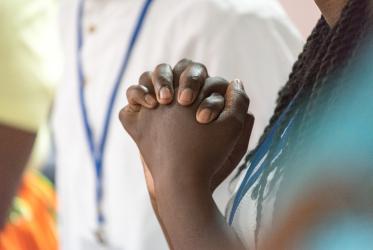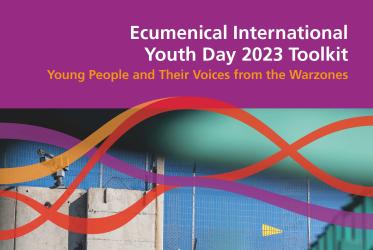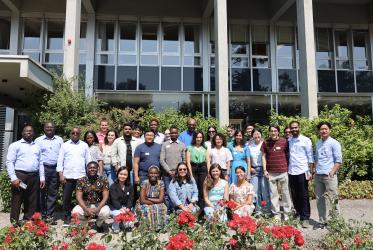Introduction
The stories and questions in this study guide on Baptism, Eucharist and Ministry (BEM) are intended for group discussion or individual study.
"In January 1982, a major advance was made on the ecumenical journey. Over one hundred theologians unanimously recommended to the WCC Central Committee to share an agreed statement on 'Baptism, Eucharist and Ministry' with the churches for their common study and official response. These biblical scholars and doctrinal specialists, coming from over thirty countries, represented nearly all major Christian church traditions: Eastern Orthodox, Oriental Orthodox, Roman Catholic, Old Catholic, Lutheran, Anglican, Reformed, Methodist, United, Disciples, Baptist, Adventist and Pentecostal." *
For groups
Read one of the stories together. You may want to encourage each person to reflect quietly after reading the story before discussing your reactions. Look together through the questions that accompany the story. Feel free to add other questions. Think about how this story is relevant to your own church or context. If it is not relevant, then think of how the issues of Baptism, Eucharist and Ministry are experienced in your community. Also reflect on how age, gender, culture and identity interplay with each of these church practices. Encourage each person to participate by sharing their own stories and experiences in relation to the topics.
Follow up
-
Ask the group participants to respond to the story in a creative way. Depending on the interest and willingness of the group, this could be through drama, mime, art collage, painting, music etc.
-
After studying and discussing the stories you may want to visit different churches together as a group. It will be beneficial to make contact with the clergy or some members of the church before your visit. After attending a worship service, baptism or bible study at the church, meet together and debrief your experience and impressions. You may also want to do this with a member from that church so that you can ask them questions about what you saw or experienced.
-
Create a map or chart of your “faith journey”. This should demonstrate how you became a Christian and what were the important moments or people that influenced your faith. Include how Baptism, Eucharist and Ministry fit into your faith journey. Once you’ve created your map, use it as a tool to share with others about your life and faith.
For individuals
After reading through the stories and questions, you may want to reflect on or write about your own personal experiences in the church especially in relation to Baptism, Eucharist and Ministry. How do these issues relate to your faith and local church life? Furthermore, you may want to find out more about your own church’s position on Baptism, Eucharist and Ministry. What is your church’s ecumenical engagement? Is your church involved with the World Council of Churches or in bilateral dialogue with other Christian confessions? If you are not sure, you may want to ask an ordained or lay leader in your church about it. For the original Baptism, Eucharist and Ministry statement (the "Lima text") or for more information about the WCC and its member churches work towards Christian unity, check the programme on Unity, mission, evangelism and spirituality.
Case studies:
- God in our image
- Christians old and new
- Divided at the altar
- At home alone
***
* This web-based study guide is adapted from the book "Growing Together in Baptism, Eucharist and Ministry—A Study Guide", William H. Lazareth. Geneva: World Council of Churches, 1982.
For further reading, refer to "BEM at 25—Critical insights into a continuing legacy," Ed. Thomas F. Best & Tamara Grdzelidze. France: World Council of Churches, 2007.





